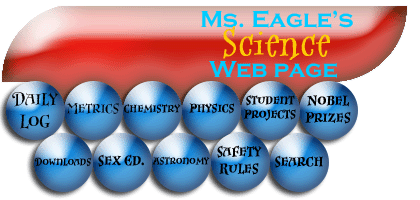

There are four different states of matter. They are solid, liquid, gas, and plasma.
Solids

Solids retain a constant volume and mostly a constant shape. There are two different types of solids, amorphous and crystalline. Amorphous solids have a constant shape, but do not have a constant volume. The particles are disorderly, and so they form more playable substances like rubber,and even glass. If you were to look at a very old window, you would see it is much thicker at the bottom than at the top. This is because over time, the glass slowly slides down the to the bottom because of gravity. The other type of solid is crystalline. The particles within this type of solid are very orderly in repeating rows. They are stronger and form solids like metal.
Liquids

Liquids have broken some bonds between the substances, and therefore do not retain the same shape, but rather they form the shape of the container they are placed in. They do, however, retain a constant volume.
Gas

Gases have broken all bond between each other, and only attract towards one another. They, like liquids do not retain their same shape, and the also take the shape of the container. However, gases also don't retain the same volume, they fit to the container based on amount of pressure and temperature (see Boyle's Law and Charles's law).
Plasma

Plasmas are the most common substances in the universe. They are found naturally occuring in things like stars, fire and lightning, and artifically in flourescent lights. Plasmas are totally apart from other particles, and move independently. Plasmas conduct electricity, unlike gases, and can be affected by electric and magnetic fields. Artificial plasmas are formed by passing electric charges through gases.